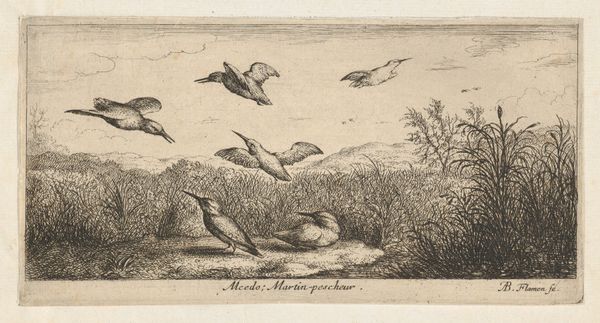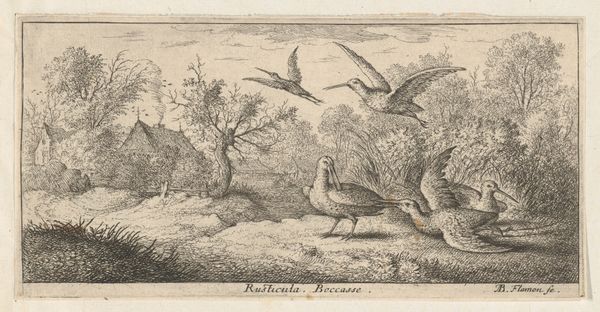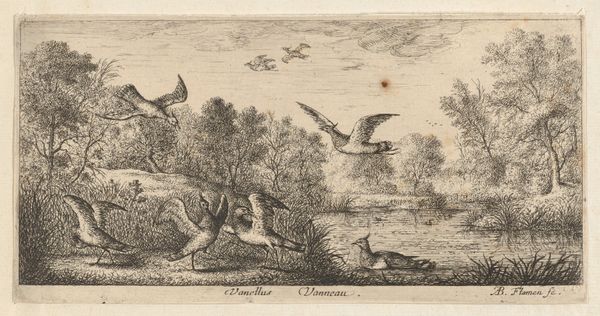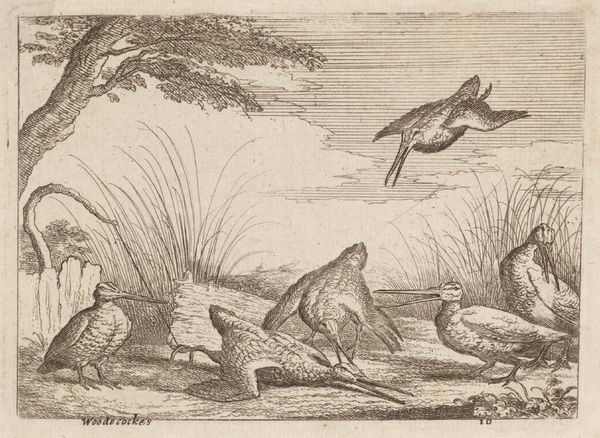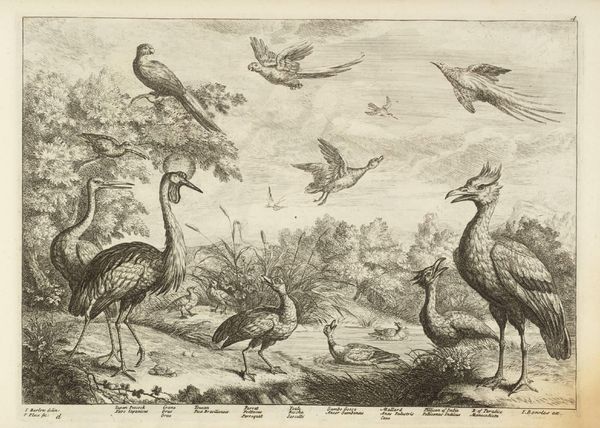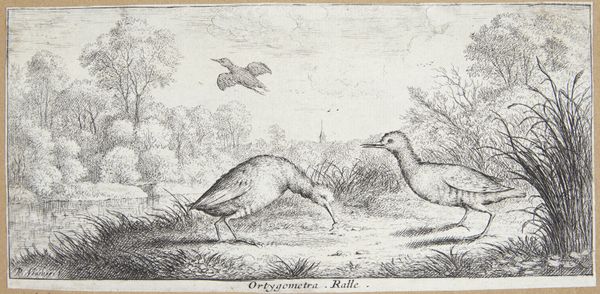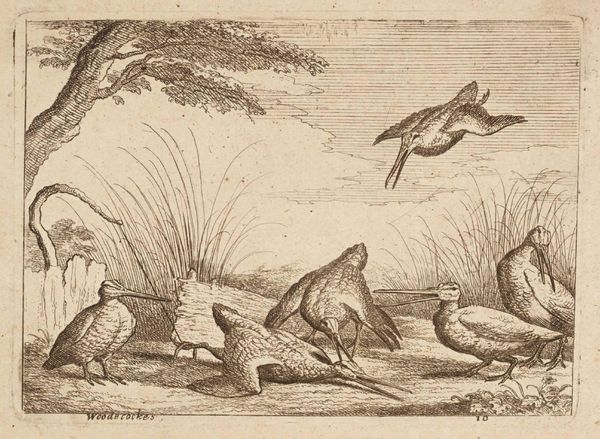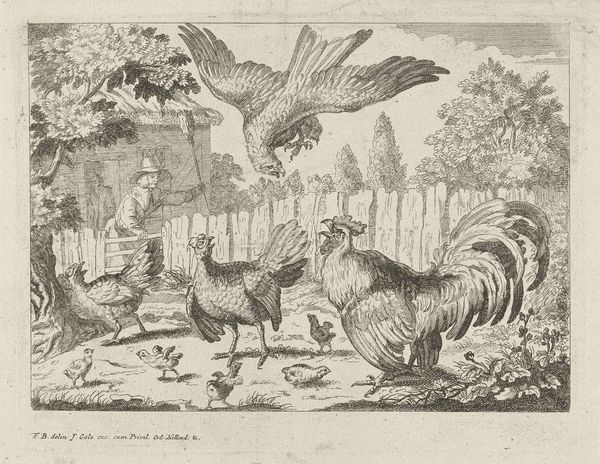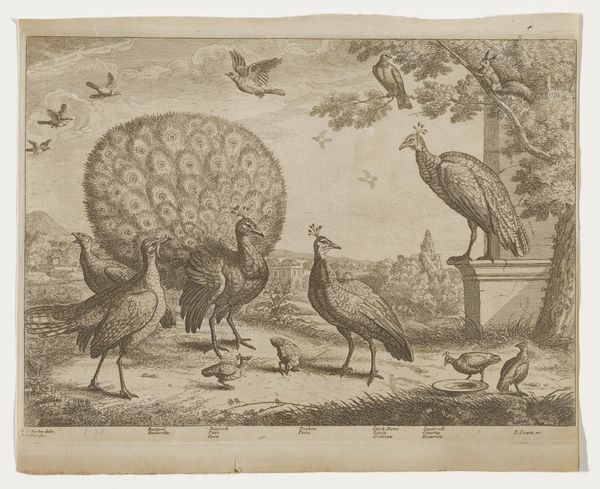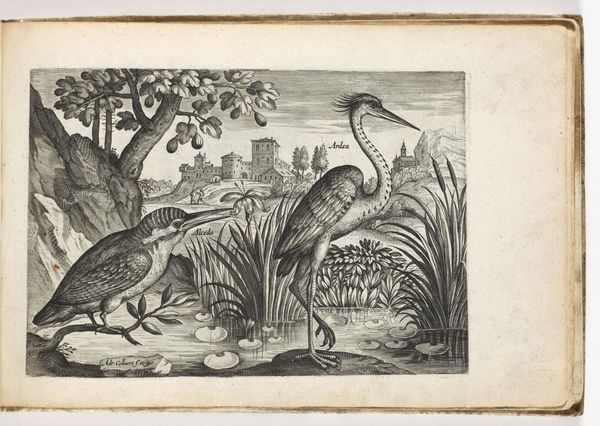
Perdix rubra, Perdix rouge (The Red-Legged Partridge), from "Livre d'Oyseaux" (Book of Birds) 1650 - 1665
0:00
0:00
drawing, print, etching, engraving
#
drawing
#
baroque
# print
#
etching
#
landscape
#
bird
#
france
#
engraving
#
realism
Dimensions: Sheet: 4 x 7 15/16 in. (10.2 x 20.2 cm)
Copyright: Public Domain
Curator: Albert Flamen created this etching and engraving sometime between 1650 and 1665. It's called "Perdix rubra, Perdix rouge," or "The Red-Legged Partridge," and comes from his "Livre d'Oyseaux," his "Book of Birds." Editor: It has a fragile and pastoral sensibility; you can feel the dry summer air and buzzing insects. The feathery scratches describing the foliage are just wonderful, so evocative, while a kind of somber realism underlies it. Curator: The print's existence comes out of shifts in natural science and how knowledge was being cataloged and disseminated at this time. Bird books were extremely popular, indicating the public's interest in the natural world but also the beginnings of scientific classification. Editor: And a new aesthetic. He has used light and shadow expertly in monochrome, making it delicate yet lively. I like how some birds in the middle distance have a certain opacity, while others recede into the airy sky. There is a great compositional balance and some beautifully observed ornithology. It must have taken weeks of dedicated, observant patience to get them right. Curator: Flamen was born in Flanders, now part of Belgium. He became a master in Paris, joining the goldsmiths' guild. The skills honed there definitely transferred to his printmaking—the line work is meticulous. But it’s not just botanical or zoological illustration. Editor: It is quite playful and has a kind of naïve perfection. Almost photographic in its naturalism. It feels spontaneous yet somehow melancholy. Curator: The printing press democratized access to imagery and information, of course, contributing to shifts in class and power relations. Publications like Flamen’s catered to increasingly sophisticated audiences interested in the world around them. Editor: These delicate evocations transport us back. I can almost smell the earthy, pungent scents of that distant field. Curator: He reminds us to slow down, pay attention, and appreciate these marvels right in front of us.
Comments
No comments
Be the first to comment and join the conversation on the ultimate creative platform.

